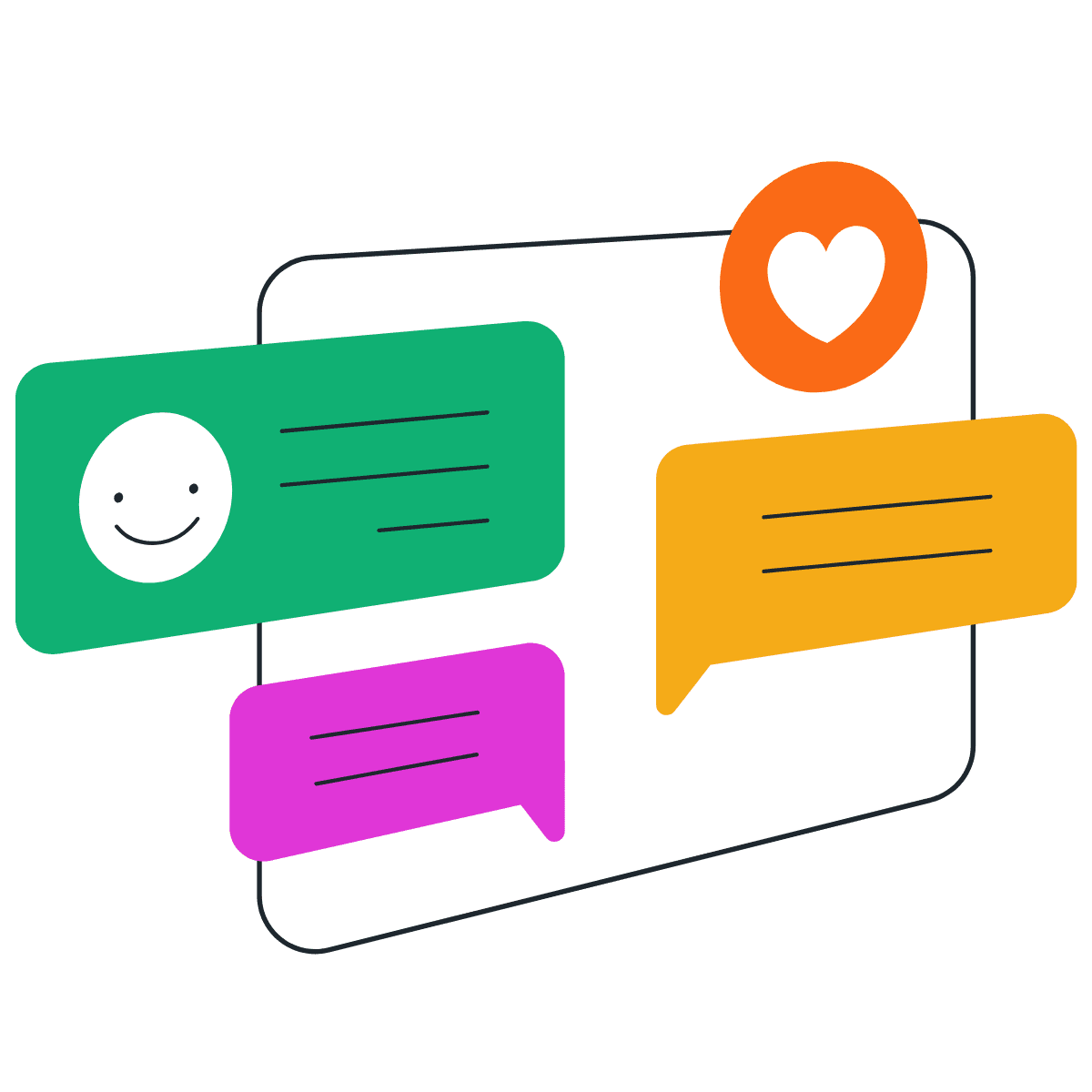Here’s how to optimize for AI search and traditional SEO
Key takeaways:
|
What makes AI agents different from search engines?
AI search is still evolving, and there’s no single rulebook. What we do know comes from testing, research, and firsthand results. The guidance below reflects what’s worked for my clients so far, and while the field may change quickly, these principles have proven to be useful.
You already know that SEO is about matching queries to the best result. AI agents, by contrast, try to understand the query and assemble a helpful response by pulling excerpts from multiple sources. International SEO expert Aleyda Solís refers to this as “chunk-level optimization,” and what she’s documenting is fascinating.
Here’s a quick breakdown:
| Category | Search Engines | AI Agents |
| Retrieval | Retrieve whole pages that best match a query | Extract focused, self-contained passages |
| Display | Show ranked links and meta descriptions | Synthesize and summarize across multiple sources |
| Metrics | Track rankings, clicks, and traffic | Track citations, mentions, and answer inclusion |
| Crawlability | Render and crawl full pages | Prioritize structure, coherence, and fast-loading text |
| Content Format | Prefer comprehensive page-level content | Prefer distinct, standalone sections |
How AI agents decide which content to show
From what we’ve seen so far, AI agents don’t index or rank pages the way Google does. They extract information in real time, scanning for self-contained passages that directly answer a prompt. Because they operate under tight time constraints, these agents may only read the top portion of a page. They won’t render JavaScript-heavy layouts or parse complex styling. Instead, they prioritize fast-loading, structurally sound content.
Again, as an industry, we don’t fully understand how AI chooses to pair results with queries. But here are a few concepts that I’ve been discussing with my clients:
- Each section should focus on a single concept and make sense independently of the others. We refer to this as chunk-level or passage-level optimization.
- Use semantic HTML with tags like <h2>, <section>, <article>, and <p> to help machines scan your content.
- Pages that load in under two seconds are more likely to be fully crawled by AI agents.
- Adding structured data from Schema.org, such as FAQPage or Article markup, helps AI understand and classify your content.
- Updating content regularly and including visible timestamps can increase its chances of appearing in tools like Perplexity and AI Overviews.
- Including author information, profile links, and citations can help establish credibility and improve the likelihood of being cited.
One of my freelance clients had a high-authority guide that ranked well on Google but didn’t appear in AI overviews. We suspected that key information was buried too deeply, and the introduction was too vague. After restructuring the page with HTML, concise headings, and scannable content near the top, the guide began appearing in Gemini and ChatGPT results within weeks.
Bottom line: authority still matters, but the right types of content formats for AI are what get you seen.
How to optimize for AI and search results
Many SEOs are watching impressions climb while clicks drop. One study from Seer Interactive found that Google’s AI Overviews cut click-through rates nearly in half, from 1.4% to 0.64%.
I don’t claim to have a foolproof strategy. But if we don’t start testing, we’re stuck reacting to change instead of adapting. So here’s how I’ve reframed my content updates to target both AI and traditional SEO:
| Element | Traditional SEO | AI Agent Optimization |
| Keywords | Match query terms | Match intent and phrasing |
| Structure | Page-level organization | Passage-level, one concept per section |
| Schema | Helpful for rich results | Essential for passage recognition |
| Backlinks | Signal trust and authority | Improve citation likelihood |
| Page speed | Ranking factor | Can make or break inclusion |
Now, here’s how to make these insights actionable.
1. Use semantic HTML and structured formatting
Well-formatted HTML helps both search engines and AI extract your content. Use detailed headings, semantic section tags, and logical structure. This is especially important for AI, which pulls only a portion of your page.
In a guide I wrote for a SaaS platform, we wrapped the definition of “process mapping” in its own <section> with standard <h2> and <p> tags. Soon after, Claude and Perplexity began citing that section in answers about workflow diagrams.
2. Add structured data
Schema markup helps machines understand not only your content, but also the type of content it is. Tagging sections with formats like FAQPage, HowTo, and Article schema enables AI agents to classify and reuse your information more reliably.
In the same guide, we added FAQPage schema to a section that answers process diagram questions. Soon after, that block began to appear in Google AI Overviews under prompts such as “how to create a workflow diagram.” The structured data likely played a significant role in helping that section get picked up.
3. Prioritize accuracy and brevity
AI agents don’t parse nuance the way human readers do. They look for direct, unambiguous statements, especially when responding to factual prompts.
In our process mapping guide, we rewrote the introduction to open with a one-sentence definition, followed by a brief paragraph outlining the key benefits. That revision made it easier for AI tools to lift passages, and we started seeing citations under prompts like “how to improve business workflows.”
4. Make your authorship visible and verifiable
If your content appears anonymous, AI may overlook it in favor of more identifiable content. Verifiable authorship, paired with structured metadata and linked profiles, adds a layer of trustworthiness that machines can recognize.
On the same guide, we included an author bio with structured data, a LinkedIn link, and a publication date. Within weeks, ChatGPT began citing that section with attribution, suggesting the added context helped validate the source.
5. Allow AI bots in robots.txt
Crawlers like GPTBot, ClaudeBot, and PerplexityBot generally need explicit permission to access your content (at least, they claim to). If they’re blocked, even unintentionally, you’re effectively invisible to AI search.
For one client, the site’s firewall was blocking ClaudeBot by default. Once we updated robots.txt and allowed verified AI agents, we observed an increase in citations, particularly for pages structured with fast-loading, semantic content.
6. Put high-value content at the top
AI agents don’t scroll. They extract what’s easiest to find and fastest to interpret. If your main point is halfway down the page, it might never get seen.
We tested this by moving a definition of “process mapping” to the top of the guide, just after the H1. That simple change led to higher visibility in Perplexity, where the agent appeared to favor the page for definitions and summaries.
7. Refresh content regularly
Freshness signals matter. AI tools are more likely to cite pages that appear recently updated, particularly if the content includes revised examples, new statistics, or marked publication dates.
We updated the process mapping guide with new links, updated terminology, and a May 2025 timestamp. Shortly after, we saw the guide surface more often in AndiSearch and Perplexity results for workflow-related prompts.
8. Improve page speed
Fast-loading pages aren’t just better for users; they’re essential for AI access. These agents run on short crawl timeouts and may abandon pages that take too long to load.
We improved the speed of our SaaS guide by compressing oversized images, replacing an autoplay video, and removing redundant third-party scripts. After those fixes, GPTBot and ClaudeBot were able to crawl and extract the guide more consistently.
How to track your content in AI answers
Alright, I’ve made big claims about how you can experiment with optimizing your content for AI agents. But how can teams, agencies, and freelancers like me actually demonstrate what’s working and what’s not? Several content auditing tools now let you see how your content appears across AI agents. While no single tool can do everything, the right mix depends on your specific goals. Whether you’re tracking citations, prompts, or crawl behavior.
Here are a few of the more promising platforms to consider for testing.
Crawl simulation and structured data parsing
- Firecrawl: Emulates how LLMs parse your content.
- Goodie: Combines SEO crawling with generative-AI simulation.
Brand mentions and AI visibility
- Profound: Tracks mentions and citations across AI platforms.
- RankRaven: Monitors brand share in AI-generated content.
Prompt tracking and competitive insights
- Peec AI: Shows which prompts trigger your content.
- Otterly: Tracks prompt performance, sentiment, and links.
Traditional SEO tools with AI insights
- SEOClarity: Includes AI Search Visibility reporting.
- Ahrefs: Adds AI Reference tracking to its link tools.
- Semrush: Offers AI Overview monitoring and prompt testing.
You can also segment your GA4 traffic analytics to isolate visits from known AI platforms. One SEOClarity tutorial helped me set up a dedicated traffic channel for ChatGPT, which revealed behavior patterns we wouldn’t have caught otherwise.
Final thought: Optimize for both AI and SEO
Search is changing fast. Optimizing for AI and traditional SEO means you’re not only showing up in search results but also getting cited, quoted, and trusted.
Minor changes to structure, clarity, and markup can help your content stay visible, whether a user clicks through or not.
You’re already putting in the effort. Make it count, regardless of how your content is discovered.
If you’d like help auditing or updating your content for AI visibility, learn more about my SEO and content services or get in touch here.
FAQs about optimizing for AI agents vs search engines
How do you optimize for AI?
To optimize for AI, you need to structure your content so it’s easy for large language models (LLMs) to parse, extract, and reuse. That means writing clear, standalone sections, using semantic HTML, keeping pages fast, and marking up key content with structured data. It’s less about keyword density and more about whether a machine can lift a passage and cite it confidently without needing additional context.
What does AI-optimized mean?
AI-optimized content refers to pages designed not just for human readers or search engines, but for machine interpretation. When someone asks, “what does AI-optimized mean?” the answer is this: it’s content that’s clear, well-structured, fast-loading, and easy for AI tools to understand and cite. Schema markup, concise explanations, and updated timestamps all help make that possible.
Do I need to change how I write content for AI search completely?
You don’t need to overhaul your writing style, but you should rethink how your content is organized. AI agents prefer clean, logically ordered sections that make sense on their own. That means writing in focused, scannable passages and using semantic HTML so each chunk is easy to interpret out of context.
What’s the difference between AI training bots and AI search bots?
The difference lies in purpose. AI training bots, including GPTBot or Google Extended, collect content to help train foundational models. Search bots, such as ClaudeBot or PerplexityBot, crawl your site in real time to generate live answers. You can choose to allow or block each type in your robots.txt file, depending on your goals.
Will optimizing for AI hurt my Google rankings?
Optimizing for AI will not hurt your Google rankings. In fact, it often helps. Improvements such as faster load times, improved structure, and updated content make your pages more accessible to AI and more competitive in search results.
How can I determine if my content is appearing in AI answers?
Traditional SEO tools won’t give you the complete picture here. To find out if your content is showing up in AI-generated responses, use tools like Profound, Peec AI, Firecrawl, and RankRaven to track citations, mentions, and prompt-level visibility. You can also create a custom traffic segment in GA4 to monitor visits from known AI platforms, which helps uncover patterns in how users interact with AI-sourced content.







